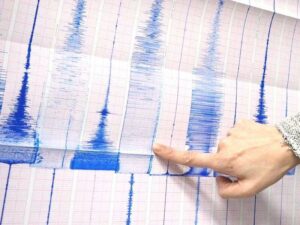
When a teenager seems unresponsive, staring blankly into space, it may be more than just a typical moment of distraction. For many young people, this behavior can signal dissociation, a temporary disconnection from their thoughts, feelings, or surroundings. This phenomenon is the brain’s protective mechanism against overwhelming stress, often linked to experiences of trauma. Despite its prevalence, dissociation remains poorly understood, particularly among parents and educators.
A recent study conducted by researchers at a Western Australian mental health service sheds light on the experiences of teens who dissociate. The research team engaged with seven adolescents who had faced significant trauma and were receiving mental health care. The goal was to explore the feelings associated with dissociation, its triggers, and effective coping strategies.
Understanding Dissociation
Dissociation serves as a safety switch for the brain, creating mental distance when emotions or memories become overwhelming. While mild dissociation, such as daydreaming during a dull class, is common, the effects can be much more pronounced for those who have experienced trauma. It is estimated that nearly three in four teens globally have faced at least one traumatic event, with this figure rising to one in two in Western countries.
In addition to traditional forms of trauma, today’s teens encounter distressing content through their devices. Exposure to violent videos, cyberbullying, and hate speech can compound feelings of distress, leading to dissociation as a coping strategy. Surveys indicate that this clinical form of dissociation affects 7–11% of high school students, making it a concern on par with anxiety disorders.
Insights from Teens
The research team collected firsthand accounts from teenagers about their experiences with dissociation. One 17-year-old, identified as Lisa, shared her feelings of detachment: “I could look in the mirror and not feel like it was me […] I knew it was me, but I didn’t feel like it was me.” Another participant, 14-year-old Verity, described a state of complete disengagement: “I’m zoned out and don’t notice what’s going on around me. […] People could be calling my name or waving in my face, and like, I don’t notice.”
Parents of these teens reported instances where their children became entirely unresponsive or experienced emotional outbursts that they later could not recall. The study found that dissociation often occurs in response to strong emotions, particularly those triggered by reminders of past trauma or social rejection.
Many teenagers expressed that having a trusted individual nearby was crucial during dissociative episodes. They often preferred companionship over advice, as Lisa noted, “I like having company because I don’t cope on my own […] it’s helpful to have someone just wait with me until it’s over.”
Strategies for Support
Effective support strategies vary among teens. Some reported that calming techniques, such as guided breathing or sensory activities, could help them regain their focus. “If someone else is there and they’re telling me what to do […] I can’t really do it on my own when I’m like that,” shared 16-year-old Amy. Others found solace in retreating to quiet spaces to help them reconnect with their surroundings.
Unfortunately, when support is unavailable, some teens resort to less productive coping mechanisms, such as escaping into fantasy worlds for prolonged periods. The research indicates that awareness of the teen’s presence and offering support can mitigate these tendencies.
Parental Guidance
Understanding the factors that contribute to a teen’s dissociative episodes can help parents respond more effectively. Situations involving bullying, rejection, or feelings of inadequacy can be deeply distressing for a developing mind. If a teen appears distant or unresponsive, it is critical for parents to stay curious rather than frustrated, considering what may be happening beneath the surface.
When witnessing dissociation, maintaining a calm presence can be beneficial. Engaging in simple activities, such as taking a walk or practicing slow breathing, can offer comfort. If dissociative symptoms are severe or persistent, seeking assistance from mental health professionals or general practitioners is advisable.
Ultimately, recognizing dissociation as a coping response rather than a behavioral issue can foster empathy and understanding. By adopting trauma-informed approaches in both home and educational settings, caregivers can create environments that prioritize safety and trust. Providing choices, such as breaks or sensory-friendly spaces, can empower teens, allowing them to regain a sense of control over their experiences.
The insights gathered from this study emphasize the importance of supporting teens grappling with dissociation. By responding with patience and compassion, parents and caregivers can strengthen their relationships with young people who face these challenges.
If this article raises concerns for you or someone you know, consider reaching out to organizations such as Lifeline at 13 11 14 or Kids Helpline at 1800 55 1800 for support.
Helen Milroy receives funding from the NHMRC, ARCP, Perth Children’s Hospital Foundation, and the Commonwealth Department of Health. Bronwyn Milkins reports no relevant affiliations beyond her academic appointment.






